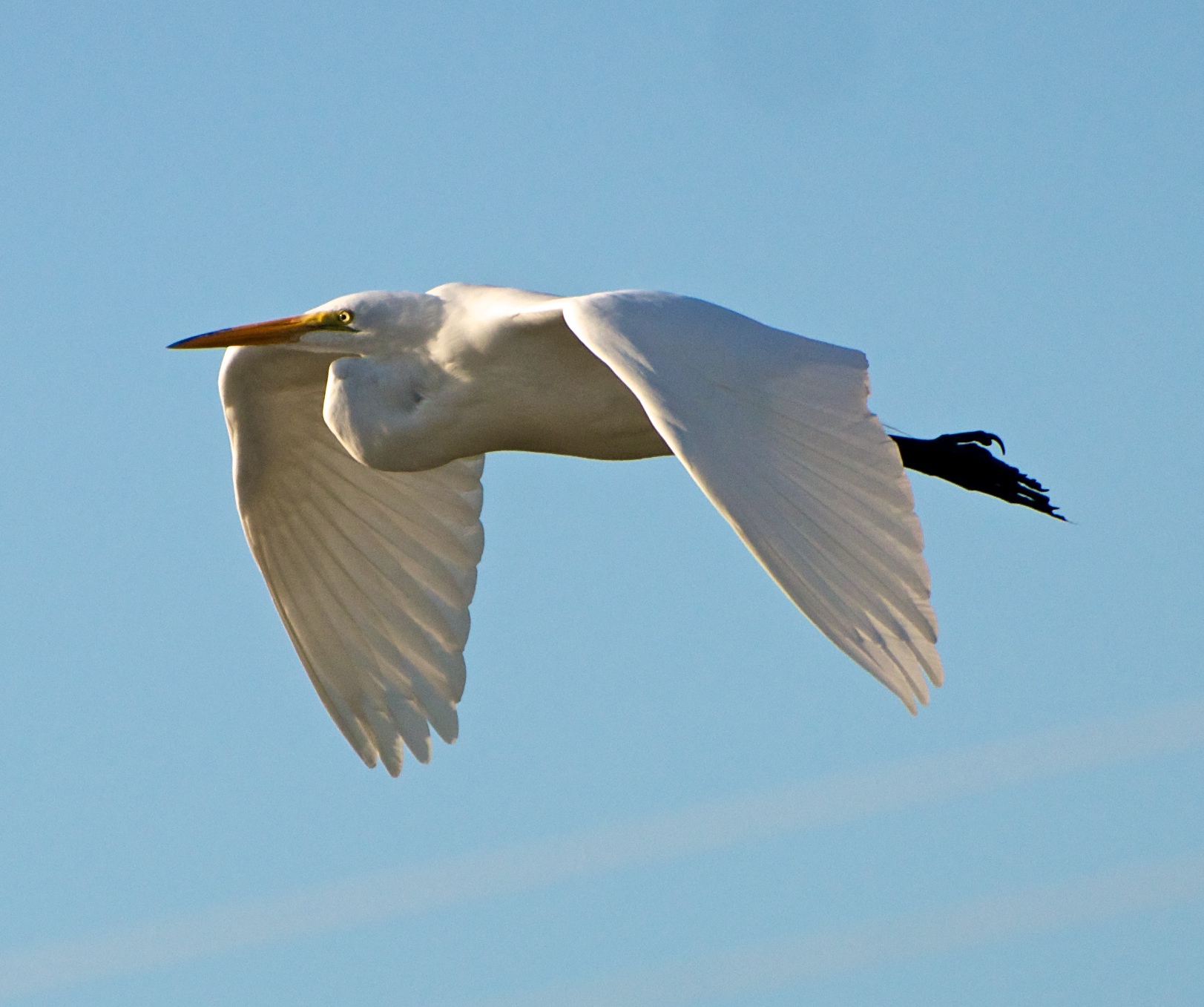|
Ardea (bird)
''Ardea'' is a genus of herons. The genus name comes from Latin ''ardea'' "heron". These herons are generally large in size, typically 80–100 cm or more in length. These large herons are associated with wetlands where they prey on fish, frogs, and other aquatic species. Most members of this almost worldwide group breed colonially in trees, building large stick nests. Northern species such as great blue, grey, and purple herons may migrate south in winter, although the first two do so only from areas where the waters freeze. These are powerful birds with large spear-like bills, long necks and long legs, which hunt by waiting motionless or stalking their prey in shallow water before seizing it with a sudden lunge. They have a slow steady flight, with the neck retracted as is characteristic of herons and bitterns; this distinguishes them from storks, cranes, flamingos, and spoonbills, which extend their necks. Taxonomy The genus ''Ardea'' was introduced in 1758 by t ... [...More Info...] [...Related Items...] OR: [Wikipedia] [Google] [Baidu] |
Dasornis
''Dasornis'' is a genus of the prehistoric pseudotooth birds. These were probably rather close relatives of either pelicans and storks, or of waterfowl, and are here placed in the order Odontopterygiformes to account for this uncertainty. Almost all known material of this bird is from some 50 million years ago (Ma) and has been recovered from the Ypresian (Early Eocene) London Clay of the Isle of Sheppey (England). The exception are a few approximately 45 Ma-old remains from the Lutetian (Middle Eocene, MP11-13) of Etterbeek (Belgium) that are only tentatively included here, and some even more conjectural remains from outside Europe (see below). Description Like those of its relatives, the thin-walled bones of ''Dasornis'' broke easily and thus very few fossils – though still far more than of the average pseudotooth bird genus – are in decent condition. Among these is a superbly preserved partial skull that has been of crucial importance in sorting out the convo ... [...More Info...] [...Related Items...] OR: [Wikipedia] [Google] [Baidu] |
Bittern
Bitterns are birds belonging to the subfamily Botaurinae of the heron family Ardeidae. Bitterns tend to be shorter-necked and more secretive than other members of the family. They were called ''hæferblæte'' in Old English; the word "bittern" came to English from Old French ''butor'', itself from Gallo-Roman ''butitaurus'', a compound of Latin ''būtiō'' (buzzard) and ''taurus'' (bull). Bitterns usually frequent reed beds and similar marshy areas and feed on amphibians, reptiles, insects, and fish. Bitterns, like herons, egrets, and pelicans, fly with their necks retracted, unlike the similar storks, ibises, and spoonbill Spoonbills are a genus, ''Platalea'', of large, long-legged wading birds. The spoonbills have a global distribution, being found on every continent except Antarctica. The genus name ''Platalea'' derives from Ancient Greek and means "broad", refe ...s, which fly with necks outstretched. Species There are currently 14 species divided into three genera ... [...More Info...] [...Related Items...] OR: [Wikipedia] [Google] [Baidu] |
Grey Heron
The grey heron (''Ardea cinerea'') is a long-legged wading bird of the heron family, Ardeidae, native throughout temperate Europe and Asia and also parts of Africa. It is resident in much of its range, but some populations from the more northern parts migrate southwards in autumn. A bird of wetland areas, it can be seen around lakes, rivers, ponds, marshes and on the sea coast. It feeds mostly on aquatic creatures which it catches after standing stationary beside or in the water or stalking its prey through the shallows. Standing up to tall, adults weigh from . They have a white head and neck with a broad black stripe that extends from the eye to the black crest. The body and wings are grey above and the underparts are greyish-white, with some black on the flanks. The long, sharply pointed beak is pinkish-yellow and the legs are brown. The birds breed colonially in spring in "heronries", usually building their nests high in trees. A clutch of usually three to five bluish-gree ... [...More Info...] [...Related Items...] OR: [Wikipedia] [Google] [Baidu] |
Ardea Cinerea - Pak Thale , a small town in Pella, Macedonia, Greece
{{Disambiguation ...
Ardea may refer to: *Ardea, Lazio, a town in Lazio, Italy * ''Ardea'' (bird), a genus of large herons and some egrets * ''Ardea'' (journal), an ornithological journal published by the Netherlands Ornithologists' Union *The Ardea, a condominium high-rise building in Portland, Oregon, USA *Lancia Ardea, a small car produced by the Turin firm between 1939 and 1953 *Aridaia Aridaía (; mk, С'ботско, ''S'botsko''; bg, Съботско) is a town and a former municipality in the Pella regional unit, Greece. Since the 2011 local government reform it is part of the municipality Almopia, of which it is a mun ... [...More Info...] [...Related Items...] OR: [Wikipedia] [Google] [Baidu] |
Egret
Egrets ( ) are herons, generally long-legged wading birds, that have white or buff plumage, developing fine plumes (usually milky white) during the breeding season. Egrets are not a biologically distinct group from herons and have the same build. Biology Many egrets are members of the genera ''Egretta'' or '' Ardea'', which also contain other species named as herons rather than egrets. The distinction between a heron and an egret is rather vague, and depends more on appearance than biology. The word "egret" comes from the French word ''aigrette'' that means both "silver heron" and "brush", referring to the long, filamentous feathers that seem to cascade down an egret's back during the breeding season (also called "egrets"). Several of the egrets have been reclassified from one genus to another in recent years; the great egret, for example, has been classified as a member of either ''Casmerodius'', ''Egretta'', or ''Ardea''. In the 19th and early part of the 20th centuries, s ... [...More Info...] [...Related Items...] OR: [Wikipedia] [Google] [Baidu] |
Great Egret
The great egret (''Ardea alba''), also known as the common egret, large egret, or (in the Old World) great white egret or great white heron is a large, widely distributed egret. The four subspecies are found in Asia, Africa, the Americas, and southern Europe. Recently it is also spreading to more northern areas of Europe. Distributed across most of the tropical and warmer temperate regions of the world, it builds tree nests in colonies close to water. Taxonomy and systematics Like all egrets, it is a member of the heron family, Ardeidae. Traditionally classified with the storks in the Ciconiiformes, the Ardeidae are closer relatives of pelicans and belong in the Pelecaniformes, instead. The great egret—unlike the typical egrets—does not belong to the genus ''Egretta'', but together with the great herons is today placed in '' Ardea''. In the past, however, it was sometimes placed in ''Egretta'' or separated in a monotypic genus ''Casmerodius''. The Old World population is ... [...More Info...] [...Related Items...] OR: [Wikipedia] [Google] [Baidu] |
Cocoi Heron
The cocoi heron (''Ardea cocoi'') is a species of long-legged wading bird in the heron family Ardeidae found across South America. It has predominantly pale grey plumage with a darker grey crest. A carnivore, it hunts fish and crustaceans in shallow water. Taxonomy and evolution The cocoi heron was originally described by Carl Linnaeus in his 1766 12th edition of Systema Naturae, 12th edition of ''Systema Naturae'', The origin of its species name is unknown, but may be related to the common name in Chile ''cuca'', which in turn denotes the bird's call note.Johnson AW. 1965. The Birds of Chile. Privately printed, Buenos Aires. It is more widely known in South America as ''garza mora'' or "black heron".Hancock J, Kushlan J. 1984. ''The Herons Handbook''. Croom Helm, 1st edition. The cocoi heron forms a superspecies with the similar Afro-Eurasian grey heron and North and Central American great blue heron, with all of these species showing similar skeletal morphology (biology), morp ... [...More Info...] [...Related Items...] OR: [Wikipedia] [Google] [Baidu] |
George Robert Gray
George Robert Gray FRS (8 July 1808 – 6 May 1872) was an English zoologist and author, and head of the ornithological section of the British Museum, now the Natural History Museum, in London for forty-one years. He was the younger brother of the zoologist John Edward Gray and the son of the botanist Samuel Frederick Gray. George Gray's most important publication was his ''Genera of Birds'' (1844–49), illustrated by David William Mitchell and Joseph Wolf, which included 46,000 references. Biography He was born in Little Chelsea, London, to Samuel Frederick Gray, naturalist and pharmacologist, and Elizabeth (née Forfeit), his wife. He was educated at Merchant Taylor's School. Gray started at the British Museum as Assistant Keeper of the Zoology Branch in 1831. He began by cataloguing insects, and published an ''Entomology of Australia'' (1833) and contributed the entomogical section to an English edition of Georges Cuvier's ''Animal Kingdom''. Gray described many spec ... [...More Info...] [...Related Items...] OR: [Wikipedia] [Google] [Baidu] |
Type Species
In zoological nomenclature, a type species (''species typica'') is the species name with which the name of a genus or subgenus is considered to be permanently taxonomically associated, i.e., the species that contains the biological type specimen(s). Article 67.1 A similar concept is used for suprageneric groups and called a type genus. In botanical nomenclature, these terms have no formal standing under the code of nomenclature, but are sometimes borrowed from zoological nomenclature. In botany, the type of a genus name is a specimen (or, rarely, an illustration) which is also the type of a species name. The species name that has that type can also be referred to as the type of the genus name. Names of genus and family ranks, the various subdivisions of those ranks, and some higher-rank names based on genus names, have such types. [...More Info...] [...Related Items...] OR: [Wikipedia] [Google] [Baidu] |
Systema Naturae
' (originally in Latin written ' with the ligature æ) is one of the major works of the Swedish botanist, zoologist and physician Carl Linnaeus (1707–1778) and introduced the Linnaean taxonomy. Although the system, now known as binomial nomenclature, was partially developed by the Bauhin brothers, Gaspard and Johann, Linnaeus was first to use it consistently throughout his book. The first edition was published in 1735. The full title of the 10th edition (1758), which was the most important one, was ' or translated: "System of nature through the three kingdoms of nature, according to classes, orders, genera and species, with characters, differences, synonyms, places". The tenth edition of this book (1758) is considered the starting point of zoological nomenclature. In 1766–1768 Linnaeus published the much enhanced 12th edition, the last under his authorship. Another again enhanced work in the same style and titled "'" was published by Johann Friedrich Gmelin between 1788 a ... [...More Info...] [...Related Items...] OR: [Wikipedia] [Google] [Baidu] |
Spoonbill
Spoonbills are a genus, ''Platalea'', of large, long-legged wading birds. The spoonbills have a global distribution, being found on every continent except Antarctica. The genus name ''Platalea'' derives from Ancient Greek and means "broad", referring to the distinctive shape of the bill. Six species are recognised, which although usually placed in a single genus have sometimes been split into three genera. All spoonbills have large, flat, spatulate bills and feed by wading through shallow water, sweeping the partly opened bill from side to side. The moment any small aquatic creature touches the inside of the bill—an insect, crustacean, or tiny fish—it is snapped shut. Spoonbills generally prefer fresh water to salt but are found in both environments. They need to feed many hours each day. Taxonomy The genus ''Platalea'' was introduced in 1758 by the Swedish naturalist Carl Linnaeus in 1758 in the tenth edition of his ''Systema Naturae''. The genus name is Latin for ... [...More Info...] [...Related Items...] OR: [Wikipedia] [Google] [Baidu] |
_with_Great_Egret_(Casmerodius_albus)_W_IMG_9999.jpg)







_(2).jpg)
.png)
